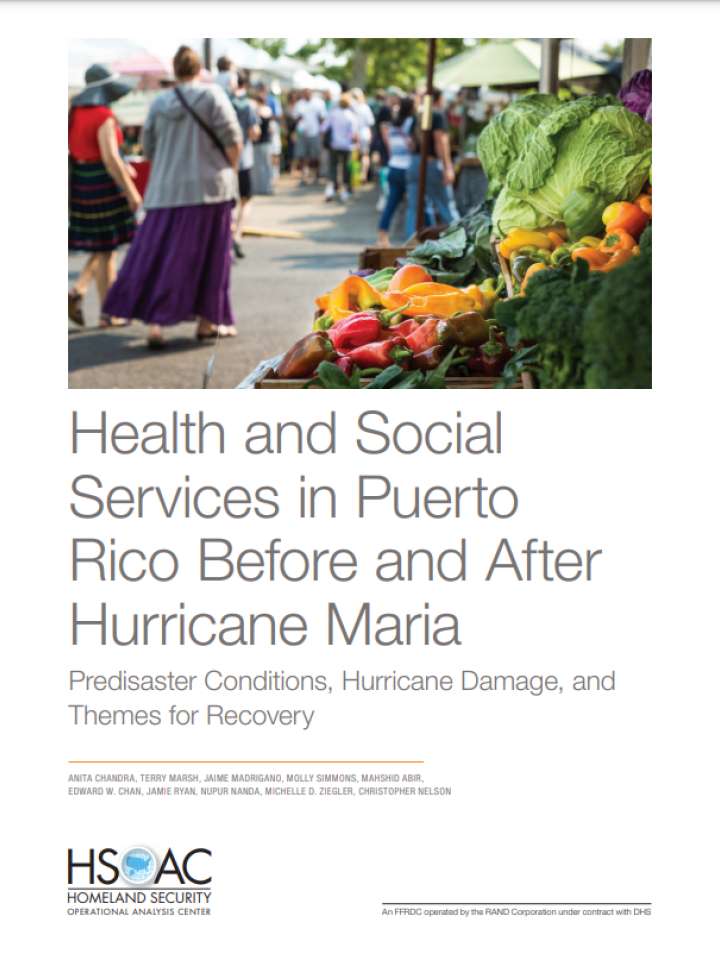Health and social services in Puerto Rico before and after hurricane Maria: Predisaster conditions, hurricane damage, and themes for recovery
HSOAC research provided the foundation for the 31 courses of action in the recovery plan addressing the health and social services sector. These actions are a mix of social, governmental, fiscal, and economic policies and reforms. This collection of actions presents an opportunity to build a more resilient health and social services infrastructure and regional health care networks to ensure reliable access to services, promote health and well-being, and more efficiently and effectively respond to public health crises and future disasters.
Key Findings
- Puerto Rico faced persistent economic and sociodemographic challenges prehurricane
- Health care facilities sustained major damage from the hurricanes
- Health impacts were wide-ranging in the wake of the hurricanes
- Social services that could avert negative health outcomes were also disrupted
Recommendations
- Large efforts to build capacity and strengthen the backbone of the health care system would make Puerto Rico more resilient to future disasters. New technologies (e.g., solar-powered generators, mobile and telehealth systems) would ensure a more flexible and agile infrastructure for accessing clinical data and delivering care. Stronger primary care options (e.g., community health centers) with improved mental health services, better financing (e.g., Medicaid/Medicare payments), and integrating/digitizing health information would aid in postdisaster periods and improve the standard of care overall.
- The workforce for health can be strengthened with programs to incentivize, retain, and train health care providers and public health practitioners. Initiatives would include loan repayment programs, policies to allow nurse practitioners (NPs) and physician assistants (PAs) from other states to provide care, and training in public health surveillance and vital records data use.
- Supportive services for the most at-need populations—children, seniors, and those with chronic health conditions—must be strengthened. Flex-funding for nutrition assistance programs, waivers to regulations for emergency health and social service needs, public education on detecting child and senior abuse, enhanced food stockpiles for older adults, and hiring more child welfare investigators are recommended actions.
- Healthy communities support healthy people. Transportation, education, natural and cultural resources (e.g., parks, museums), and broadband communications are interconnected social and economic determinants that help to improve and protect the health and well-being of communities.
- A regionally integrated approach for emergency preparedness, improved systems for emergency medical stockpiles, and public information campaigns to engage communities in the recovery process are recommended.
Explore further
